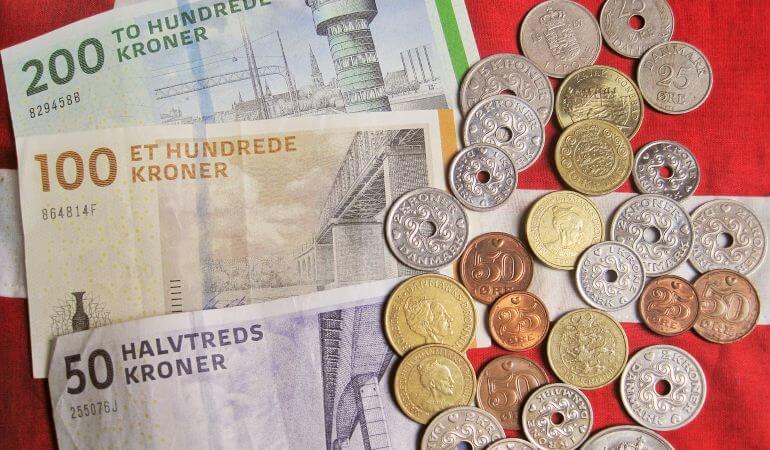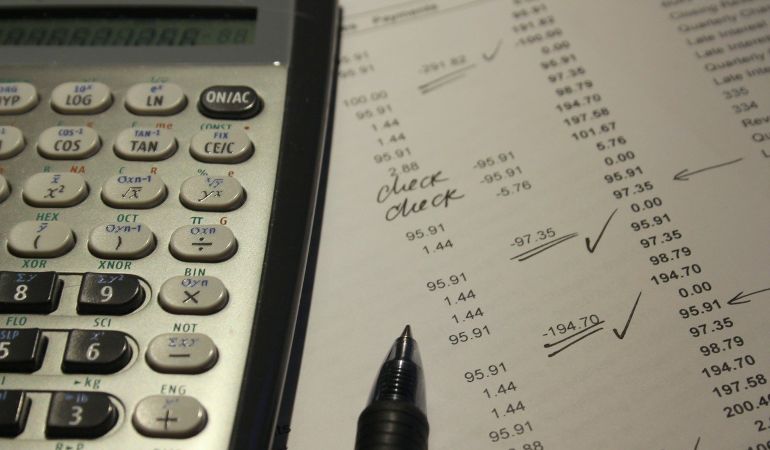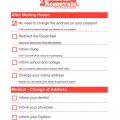
If you’re considering moving to Denmark, you’re likely curious about the cost of living there and the expenses associated with it. The standard of living in Denmark is high, even for European immigrants, and the monthly expenses for a family of four can range from approximately 3,924.07€. Moreover, the prices in the capital, Copenhagen, are among the highest in the country.
However, for international students, the cost of living in Denmark may be more affordable compared to that of regular immigrants. And, if you work on a contract, you can cope with the budget just fine (unless you spend too much on unnecessary and luxurious items, of course). Fortunately, salaries are high, too. The average monthly net salary in Denmark per person is 25,495.58 DKK.
Table of Contents
Opening a bank account
People over the age of 18, expats included, may open a bank account in Denmark before and after arrival. Most banks allow this for immigrants before their arrival on-site or through online banking.
For this purpose, they may ask you to show your CPR number and documents at a Danish branch of the bank after you arrive. This means you won’t have a fully functional Danish bank account until after you arrive in the country and visit a branch to complete the process.
Opening a Danish bank account with a reliable online bank is the second option. You can have your Danish card sent to your current address before moving to Denmark. To take advantage of all the security features and services, choose a bank with a full banking licence. This way, you will have a fully functional bank account before even arriving in Denmark.
The documents you must provide to apply for a Danish bank account are:
- Photo ID which can be either a national ID card or a passport and notarized copies of them
- Civil registration number called a CPR number
- Proof of address in a Danish document
- Proof of employment or enrollment document
Residents of Denmark over 18 years of age must also have the so-called NemID (a digital signature that gives you access to online self-services) and NemKonto, which lets you receive money from public authorities. Banks are familiar with both and can assist you to open the account or entirely do this for you.
What is the average rent in Denmark?
The accommodation costs in Denmark vary based on the specific city or town you choose to live in. In Copenhagen, rental and property prices are somewhat lower compared to those in London, yet they exceed the costs found in many other towns and cities across the UK. This contributes to the overall higher average cost of living in Denmark.
Renting a 1 bedroom apartment in the central part of Copenhagen costs about 8,002.72 DKK. If you rent the same flat in the suburbs, you’ll pay 6,134.22 DKK per month. As reported by Statistics Denmark, the total number of dwellings in Denmark in 2023 was 4.82 million, showing a 0.9% increase compared to the previous year.
Approximately 48% of these dwellings are owned by their occupants, while the remaining 51% are rented. Living in smaller towns is a great deal less expensive than choosing bigger cities, especially the capital. Most landlords expect to receive 3 months’ rent paid upfront.
You need to prove your reliability to your landlord and provide these certificates:
- Proof of solvency such as a bank statement or a contract from your current employer
- Filled in mandatory reports for the start and end of your tenancy
- Recommendations from the previous lessor
You won’t usually have any utility expenses included in the rent. Calculate the lease well, as it represents most of the overall costs of living in Denmark. Landlords and tenants have the practice of agreeing on which bills to pay in advance. The landlord pays taxes on rent.
Finding a property to live in on lease is a difficult and rather pricey task, so you can arrange this in advance. You can find landlords yourself and cut down on the expenses you would otherwise spend on estate agency fees.
How much are houses in Denmark?
In case you plan to buy a home in Denmark, you must have lived in the country for 5 or more years. You also need to have a residence permit or own a business in Denmark. As per Danish law, both residents and EU citizens are permitted to finance up to 80% of a property’s purchase price through a mortgage.
A minimum down payment of 5% from personal funds is required, while the remaining amount, which can be up to 15%, may be covered by a bank loan.
For non-EU residents, including British expatriates, the regulations differ slightly. While it is still possible to secure a mortgage from a Danish bank, based on factors such as income and creditworthiness, the initial deposit required may be considerably higher.
It is likely not unexpected that the cost of living in Denmark and other Scandinavian countries tends to be relatively high, particularly in comparison to the UK. Property prices also reflect this trend, with variations based on the type of property and location.
Choosing to buy a property in the bustling city centre of Copenhagen will result in higher costs, while purchasing a home on the outskirts can be significantly more economical. For example, an apartment in Denmark may cost 38,656.04 DKK per square meter in the central areas and 27,230.24 DKK in the suburbs.
Cost of utility bills in Denmark
Utility expenses play a significant role in the overall cost of living in Denmark. These monthly bills typically cover heating, electricity, water, cooling, and rubbish disposal, and the exact amount can vary depending on your location and living situation.
For a person living in Copenhagen in a 45 m² (480 sq ft) studio, the essential utility bills amount to approximately 1,275 DKK per month. On the other hand, 2 people in an 85 m² flat can expect to pay around 2,560 DKK for the most basic utilities.
As part of your utility costs, you’ll pay a water connection fee, a water bill, and a green tax on water. These fees are consolidated into one total bill, which includes the tax on drinking water, wastewater, VAT, and other green taxes.
Here are some utility bill averages:
| Type of Product | Average Prices |
|---|---|
| Basic (Electricity, Heating, Cooling, Water, Garbage) | 1,505.97 DKK (for 85m2 Apartment) |
| Mobile Phone Monthly Plan with Calls and 10GB+ Data | 129.57 DKK |
| Internet | 255.17 DKK (60 Mbps or More, Cable/ADSL, Unlimited Data) |
Transportation expenses
When calculating the cost of living in Denmark, you need to factor in transportation expenses, too.
Here are the expenses you can expect:
| Type of Product | Average Prices |
|---|---|
| One-way Ticket (Local Transport) | 24.00 DKK |
| Monthly Pass | 600.00 DKK |
| Taxi Start (Normal Tariff) | 50.00 DKK |
| Taxi 1km (Normal Tariff) | 15.00 DKK |
| Taxi 1hour Waiting (Normal Tariff) | 450.00 DKK |
| Gasoline (1 liter) | 14.23 DKK per litre |
Tariffs of vignettes depend on the emission class of the vehicle you drive, as well as the duration of the Eurovignette. Denmark uses a time-based toll system and applies an electronic Eurovignette.
Cost of necessities

Food costs in Denmark
Food expenses contribute a lot to the overall cost of living in Denmark and everywhere else in the world. The prices of major food products can vary. Here, we will sum them up, giving the average price in markets and restaurants for the most common and necessary ones.
Market prices of food ingredients:
| Type of Product | Average Prices |
|---|---|
| Milk (1L) | 13.50 DKK |
| Loaf of white bread (500g) | 21.81 DKK |
| Eggs (pack of 12) | 31.26 DKK |
| White rice (1 kg) | 15.95 DKK |
| Local cheese (1 kg) | 86.71 DKK |
| Beef round/back leg red meat (1 kg) | 112.14 DKK |
| Bananas (1 kg) | 21.41 DKK |
| Apples (1 kg) | 21.18 DKK |
| Oranges (1 kg) | 22.79 DKK |
| Potatoes (1 kg) | 14.15 DKK |
| Tomatoes (1 kg) | 28.98 DKK |
| Lettuce (1 head) | 13.47 DKK |
| Onion (1 kg) | 12.30 DKK |
| Bottle of mid-range wine | 65.00 DKK |
| Water (1.5L) | 9.50 DKK |
| Domestic beer (0.5L) | 12.45 DKK |
| Imported beer (0.33L) | 16.23 DKK |
| Meal, Inexpensive Restaurant | 150.00 DKK |
| Meal for 2 People, Mid-range Restaurant, Three-course | 750.00 DKK |
| Cappuccino (regular) | 40.21 DKK |
| Coke/Pepsi (0.33 liter bottle) | 26.62 DKK |
Attire and personal care
Here are the average prices of clothes, shoes, cosmetic products, and attire. These are the other expenses you must be prepared for as well.
| Type of Product | Average Prices |
|---|---|
| 1 pair of jeans (Levis or other similar brands) | 752.91 DKK |
| 1 summer dress in a branded store (H&M, Zara, etc.) | 296.27 DKK |
| 1 pair of mid-range shoes (Nike, Adidas, etc.) | 764.06 DKK |
| 1 Pair of leather business shoes for men | 1,100.17 DKK |
Personal care:
| Type of Product | Average Prices |
|---|---|
| Hair shampoo (400 ml) | 25 DKK |
| Tube of toothpaste | 16 DKK |
| Roll-on deodorant (50 ml) | 19 DKK |
| 4 rolls of toilet paper | 18 DKK |
| Cold medicine for 6 days (Coldrex, Frenadol, etc.) | 30 DKK |
| 1 box of antibiotics (12 doses) | 56 DKK |
Cost of Living in Denmark for International Students
Living costs for international students in Denmark are relatively high. However, students from the EU/EEA and permanent residents are exempt from tuition fees. For other international students, tuition costs range from 46,559.63 DKK to 139,678.89 DKK annually, depending on the chosen program, along with an application fee of around £88.75.
Living costs vary based on personal lifestyle choices. Although Denmark’s overall cost of living is elevated, students can find rental accommodations for under 3879.97 DKK per month in areas outside Copenhagen. It is advisable to allocate between £177.50 and 2328.02 DKK monthly for groceries and about 388.03 DKK for transportation.
In summary, if you reside and study outside of Copenhagen, your monthly budget should range from 5819.95 DKK to 6983.96 DKK, while living and studying in the capital city would require approximately 9311.89 DKK per month.
Moving to another country? Count on Fantastic Removals for an easy relocation!
Enter your postcode to view our rates and availability in your area.
For questions about the services we offer visit our main site or you can always call us at 020 3746 0584
Takeaways
Although the cost of living in Denmark is high and it is undeniably an expensive place to live, it remains an attractive destination for immigrants of all nationalities. The country boasts a high standard of living compared to other Western European countries and the rest of the world.
However, whether you are looking to work or study there, you will find a city or town that appeals to you. So, if you’ve decided to move to Denmark, don’t hesitate to reach out to us. Our international removal services are here to assist you and ensure a successful relocation.














